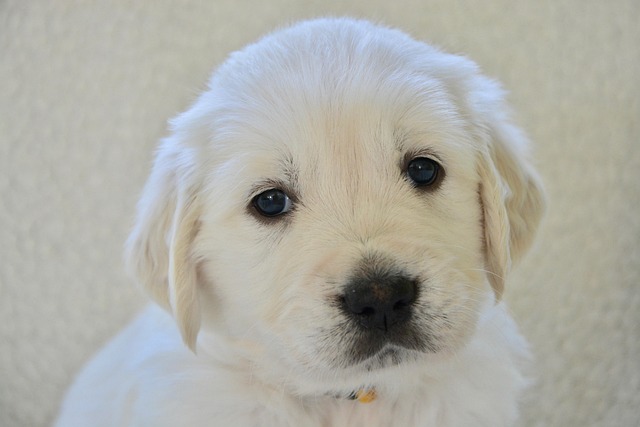Bringing home a new puppy is pure joy, isn't it? Those wobbly walks, the curious nose bumps, and that boundless energy fill your heart. But amidst the cuddles and chaos, a crucial question surfaces for every new guardian: where on earth do I even start with training? With so much to teach and that adorable, distractible mind, choosing the very first command feels monumental. Getting this foundation right isn't just about convenience; it’s about forging communication, building trust, and frankly, keeping your furry explorer safe in a big, sometimes dangerous world.
Let's cut straight to the chase. While "sit" often gets the spotlight, the single most vital, lifesaving command you should prioritize teaching your puppy is a reliable "come" – often called a recall. Think about it for a second. That split second when your pup slips out the front door, spots a squirrel near a busy road, or gets overly curious about something potentially harmful. In those heart-stopping moments, a solid recall isn't just convenient; it's an absolute game-changer for puppy come command safety. It transforms potential disaster into a manageable situation. Teaching puppy to come effectively builds an invisible safety line between you and your dog. Beyond the critical safety aspect, mastering "come" lays the groundwork for all future training. It establishes you as the source of wonderful things – praise, play, treats – strengthening your bond immensely. This isn't just about control; it's about creating a partnership built on mutual understanding and trust from the very beginning.
Okay, so we know *why* "come" is non-negotiable. Now, let's break down exactly how to train puppy to come using methods that are both effective and enjoyable for your pup. Ditch the old-school yelling or punishment; positive reinforcement is the golden ticket here. Start simple, indoors, with minimal distractions. Get down on your pup's level, sound incredibly excited, and use their name followed by "Come!" in a bright, happy voice. The instant they turn towards you or take a step in your direction, mark that behavior with an enthusiastic "Yes!" or a clicker click, and reward lavishly with an irresistible, tiny treat (think chicken or cheese bits) delivered right to your hand near your legs. Repeat this short session – we're talking 5 minutes max – several times a day. Gradually increase the distance you call from within the same room. Once they're rocketing to you indoors, move practice to your quiet backyard. Now, introduce mild distractions *after* they’ve mastered the easier level. Have a family member stand quietly nearby, drop a boring toy on the ground, or practice when there’s a slight noise outside. Always set them up for success. If they get distracted, calmly move closer, regain their attention gently, and use your recall cue again. Never, ever call your puppy for something they perceive as negative, like ending playtime abruptly for a bath or nail trim. You want "come" to always equal fantastic news!
It sounds straightforward, but anyone who's tried teaching puppy to come knows hiccups happen. One common frustration is the puppy who seems to develop selective hearing, especially outdoors. If your pup ignores you, resist the urge to chase them – that turns it into a game. Instead, move *away* from them, making playful noises or crouching down; often, their instinct to follow kicks in. Another pitfall is overusing the command without reinforcement. If you shout "come" ten times at the dog park with no result, the word loses its power. Go back to basics in a controlled environment. Patience truly is key; young puppies have incredibly short attention spans. Keep sessions brief, fun, and always end on a high note. If frustration builds for either of you, take a break. Remember, consistency across all family members is crucial. Everyone must use the exact same cue ("Come!" not "Here!" or "Get over here!") and reward enthusiastically every single time initially. This consistency builds a strong neural pathway, making the recall automatic.
Think of mastering this first command to teach puppy as more than just obedience; it's the cornerstone of your lifelong relationship. Every time your pup chooses to respond to your call, especially amidst tempting distractions, they are actively choosing you. That builds profound trust. Consistent, positive training sessions create shared language and mutual respect. You learn to read their subtle signals, and they learn to understand and trust your guidance. That frantic little ball of fluff slowly transforms into a confident companion who looks to you for direction and reassurance. The relief and warmth you feel when your pup reliably zooms back to your side, tail wagging furiously, is pure magic – a testament to the powerful connection forged through patient, positive training.
Congratulations on laying such a vital foundation! Once your pup’s recall is solid in various environments, you’ve got a fantastic springboard for teaching other essential commands. "Sit," "stay," and "leave it" are natural next steps, building on the focus and impulse control fostered by the recall. Explore reputable online resources like the American Kennel Club’s (AKC) training guides or consider enrolling in a local puppy kindergarten class. These classes offer structured learning and invaluable socialization opportunities in a controlled setting. If you hit significant roadblocks or feel overwhelmed, don’t hesitate to seek help from a certified professional dog trainer (CPDT) or a veterinary behaviorist. They can provide personalized guidance tailored to your pup’s unique personality and needs. Remember, training is an ongoing journey, not a destination. Enjoy every step, celebrate the small wins, and cherish the incredible bond you’re building with your best furry friend, one successful "come!" at a time.





